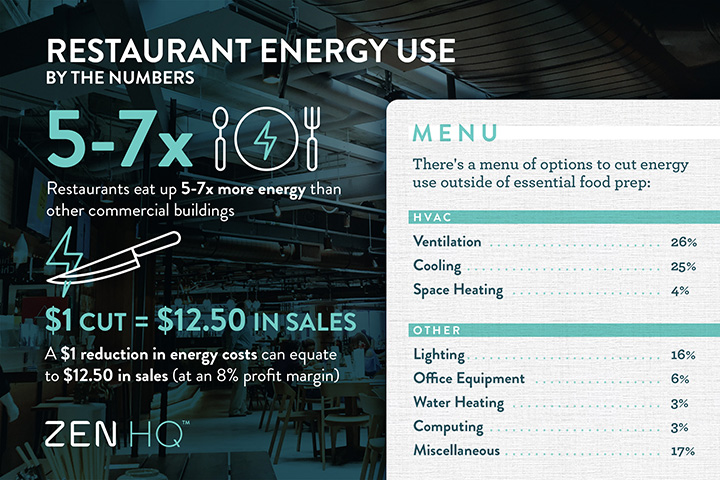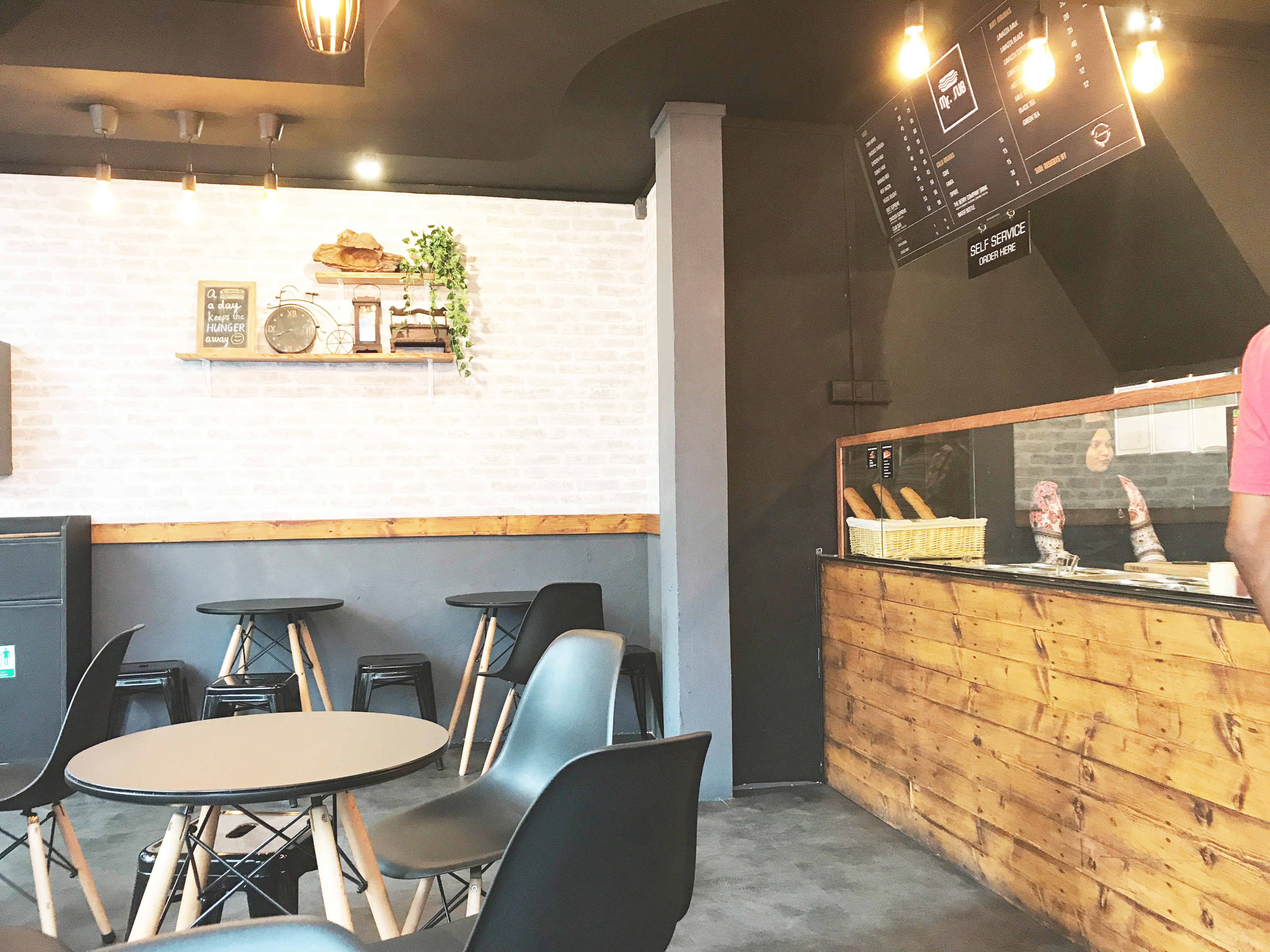Restaurant owners are constantly looking for ways to cut costs and raise profit margins yet still provide the best service to their customers. With restaurants using up to 10 times more energy per square foot than any other commercial building, it can be extremely beneficial to cut that energy usage. However, balancing energy savings and guest/employee comfort can be a challenge. There are simple changes that can be made that will save energy and generate some bonus savings.

Heating and Cooling Systems
On average, HVAC units consume 55% of a restaurant’s energy usage. The impact of managing the energy consumed by an HVAC unit can save money in various ways including utility bills, maintenance bills, and even prolonging the life of your unit. It is extremely beneficial to take the appropriate steps to manage that energy.
Implementing a schedule for your HVAC system is an easy way to manage energy consumption. Utilizing scheduling using smart thermostats can provide a pre-set temperature when the restaurant is occupied — leaving no reason for employees to adjust the thermostats. Schedules will ensure that the restaurant HVAC units are not actively heating or cooling during non-business hours, saving energy and preventing unnecessary wear and tear to the system. This will allow you to set it and forget it.
Ensure that regular maintenance is performed on HVAC systems. This will help the system run at its optimal performance allowing for higher energy efficiency. Some regular wear and tear issues can result in your HVAC system running harder and longer, resulting in a higher utility bill.
Lighting Systems
Lighting alone uses up a whopping average of 16% of the energy in restaurants. There are many different steps that a restaurant can take to cut back on the energy used by lighting. Some options are manually turning off lights when a room is unoccupied, installing smart switches, sensors and dimmers as well as replacing incandescent light bulbs with a more energy efficient option.
The most obvious means of saving energy is to simply turn off lights when rooms are unoccupied. This can either be done manually or by utilizing smart switches and sensors. By using smart switches, you can use an application to set specific schedules for lights to turn on or off according to your hours of operation. This will help prevent accidentally leaving lights on after hours. Light sensors will simply turn off lights – by using motion or infrared detectors – after the room has been vacant for a period of time and turn the lights on when the room becomes occupied.
Another option would be to include dimmers to your lighting controls. During the day, a room that is exposed to natural sunlight does not require as much light as a room that has no windows. Not only is this a great way to conserve energy, but restaurants can incorporate mood lighting into their sites to improve the dining experience.
Replacing incandescent lightbulbs with a more energy efficient light bulb, such as an LED is another simple way to cut down on your utility bill. Replacing incandescent lightbulbs with LEDS not only increases the life of your lightbulb but it also uses significantly less energy. Determining which LED bulb to get can get tricky. Luckily, there are guides to help convert watts to lumens. Lumens is not the only thing to consider when determining what type of bulb to buy. There are multiple mood options such as soft white, warm white, bright white, and daylight. Once bulbs are replaced, make sure to check with your local power company to see if you qualify for additional savings. You may be eligible for incentives or rebates.
Equipment
The kitchen equipment is imperative to the success of any restaurant. On average, a deep fryer alone uses more than 11,000 kWh per year. Shutting down and unplugging idle equipment such as stoves, ovens, fryers, etc. completely has multiple benefits. The most obvious would be saving energy by using less equipment. By leaving unused equipment on generates more heat leaving the air conditioning to work even harder to keep at the set temperature in the kitchen area. When turned off and unplugged, the equipment cannot use any electricity. Even if the equipment is turned off but still plugged in, it is still wasting energy. Completely shutting down unused equipment can also prolong the life by cutting down on any unnecessary wear and tear.
Refrigerators and Freezers
Ensuring that freezers and coolers are always completely closed is also an easy way to conserve energy. When the doors are left open for a long period of time it causes the cooling systems within the freezers and coolers to work even harder – which can also cause the motor to freeze up, costly repairs and food spoilage.
Want to learn how Zen HQ can help you save on energy? Schedule a Zen HQ demo today.






